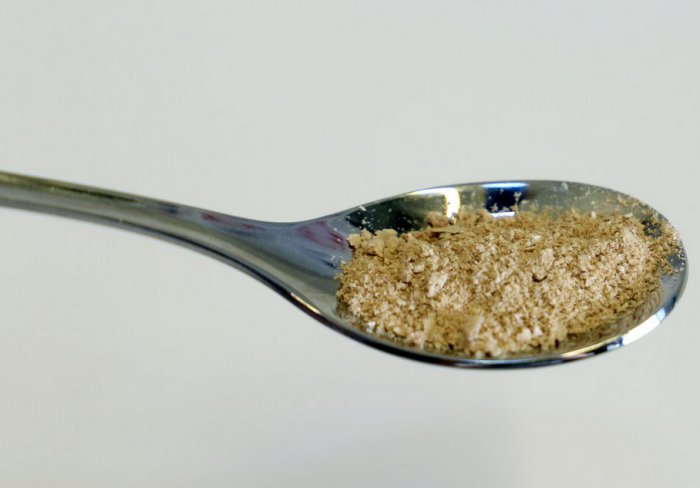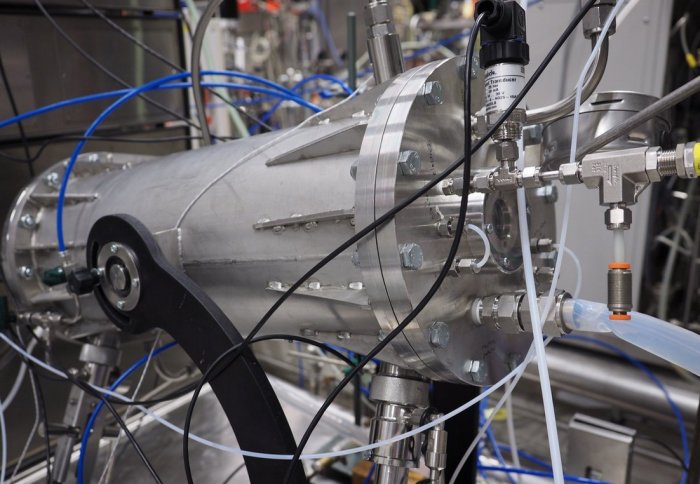
Solar electricity + air – the answer to world hunger? | Image: VTT Technical Research Centre
Researchers in Finland have created a protein-rich food using electricity and carbon dioxide, with help from microbes – a process that could be solar powered.
The food is being produced in a joint study between Lappeenranta University of Technology (LUT) and VTT Technical Research Centre using an approach claimed to be nearly 10 times as energy-efficient as common photosynthesis.
The product is 50 per cent single-cell protein (SCP) and 25 percent carbohydrates say the researchers, with the remainder being fats and nucleic acids. The final product’s ratios can be tweaked by controlling activity of the organisms and additional nutrients can be added.
“The protein can be produced anywhere renewable energy, such as solar energy, is available.”
At this point, the demonstration reactor is very small (around the size of a coffee cup) and only creating a tiny amount of the substance – around 1 gram of protein every two weeks.

Image: VTT Technical Research Centre
The researchers have a goal of making a commercially viable reactor totally powered by renewables that could be shipped anywhere in the world; producing food in disaster areas, deserts and other regions where agriculture is difficult – and perhaps also a model for use in the home.
“The idea is to develop the concept into a mass product, with a price that drops as the technology becomes more common. The schedule for commercialisation depends on the economy,” said Professor Jero Ahola of LUT.
As well as food for humans, the concept can be adapted for producing stock fodder using a completely automated process with equipment housed in a shipping container located on farms.
According to the FAO, approximately 60 percent of the world’s agricultural land is grazing land. In Australia, around 90 per cent of farm land is used for native pasture grazing, mainly in our arid and semi-arid zones.
World demand for animal-derived protein is expected to double by 2050.
If the researchers are successful in their efforts, it could help tackle growing protein demand from a couple of angles – as a replacement for animal-based protein and to help feed the animals providing it. Added bonuses would be the removal of some carbon dioxide from the atmosphere and a reduction in environmental damage associated with grazing.
The Food from Electricity study is being carried out as part of the NEO Carbon Energy project.

 RSS - Posts
RSS - Posts



Speak Your Mind